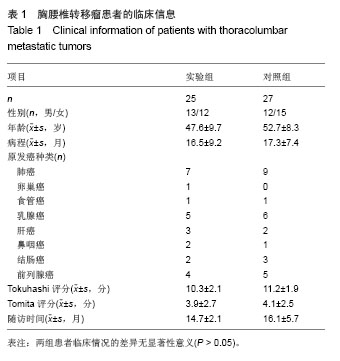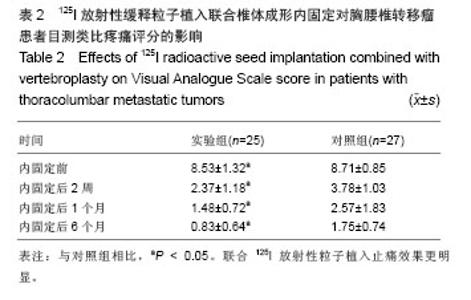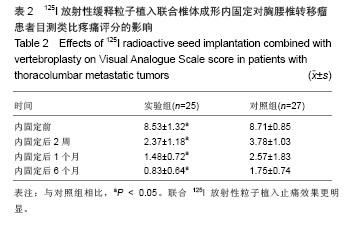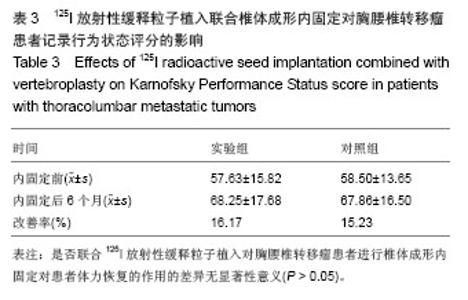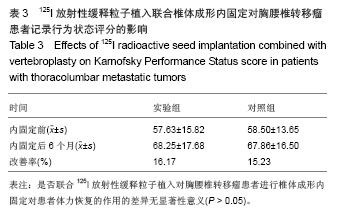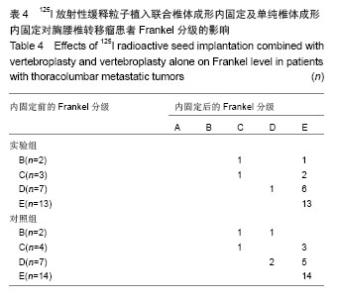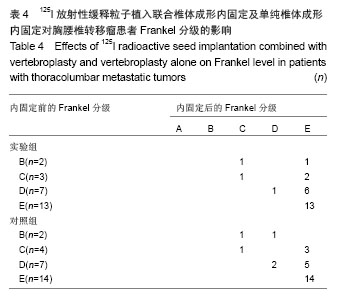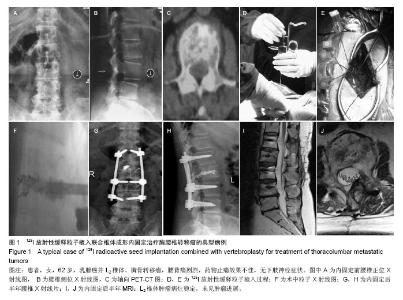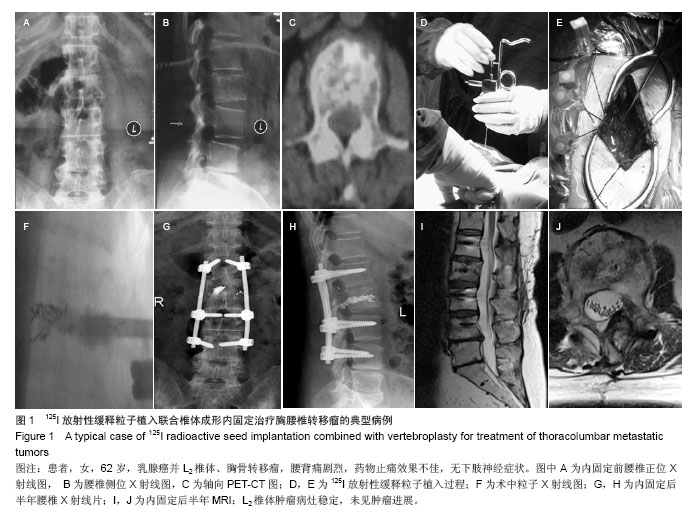| [1]贾连顺.现代脊柱外科学[M].北京:人民军医出版社,2007.
[2]Paton GR, Frangou E, Fourney DR. Contemporary treatment strategy for spinal metastasis: the "LMNOP" system. Can J Neurol Sci. 2011;38(3):396-403.
[3]闫峰,杨卫良,徐佳元,等.射频消融联合微创椎体成形术治疗脊柱转移瘤[J].中国矫形外科杂志,2012,20(1):10-13.
[4]朱晓应,叶林阳,林茂虎,等.125I放射粒子植入治疗前列腺癌12例临床分析[J].现代泌尿外科杂志,2009,14(1):25-26.
[5]王俊杰,庄永志.放射性粒子近距离治疗肿瘤[J].中国微创外科杂志,2001,1(3):187-191.
[6]Rogers CL, Theodore N, Dickman CA, et al. Surgery and permanent 125I seed paraspinal brachytherapy for malignant tumors with spinal cord compression. Int J Radiat Oncol Biol Phys. 2002;54(2):505-513.
[7]柯文坤,张景山,汪昌发,等.CT引导下经皮放射性粒子植入治疗脊柱转移瘤[J].中国当代医药,2010,17(4):169.
[8]王少飞,王宇飞,杨克敏,等.经后路内固定结合125I置入治疗脊柱转移瘤[J].中国脊柱脊髓杂志,2009,19(11):823-826.
[9]李栋,尹芸生,苏钟毅,等.椎体成形术和放射性粒子植入结合治疗椎体肿瘤[J].中国现代医学杂志,2005,15(19):3018-3020.
[10]杨祚璋,许建波,马世兴,等.脊柱转移癌经皮椎体成形术联合125I粒子植入治疗[J].中华放射医学与防护杂志,2006(2):178-179.
[11]刘晓光,袁慧书,刘忠军,等.放射性粒子置入近距离照射治疗脊柱肿瘤[J].中国脊柱脊髓杂志,2007,17(5):346-349.
[12]高国勇,镇万新,林二虎,等.经皮球囊椎体后凸成形术治疗脊柱转移瘤[J].新乡医学院学报,2010,27(3):281-283.
[13]高苏宁,赵红军,邱康宁,等.后路椎弓根结合骨水泥固定治疗脊柱骨转移癌的临床观察[J].临床肿瘤学杂志, 2008,13(7):637-639.
[14]Tokuhashi Y, Matsuzaki H, Oda H, et al. A revised scoring system for preoperative evaluation of metastatic spine tumor prognosis. Spine (Phila Pa 1976). 2005;30(19):2186-2191.
[15]Tomita K, Kawahara N, Kobayashi T, et al. Surgical strategy for spinal metastases. Spine (Phila Pa 1976). 2001;26(3): 298-306.
[16]卓水清,陈林,张福君,等.125I放射性粒子植入术后患者周围辐射剂量的监测[J].癌症,2007,26(6):666-668. |

